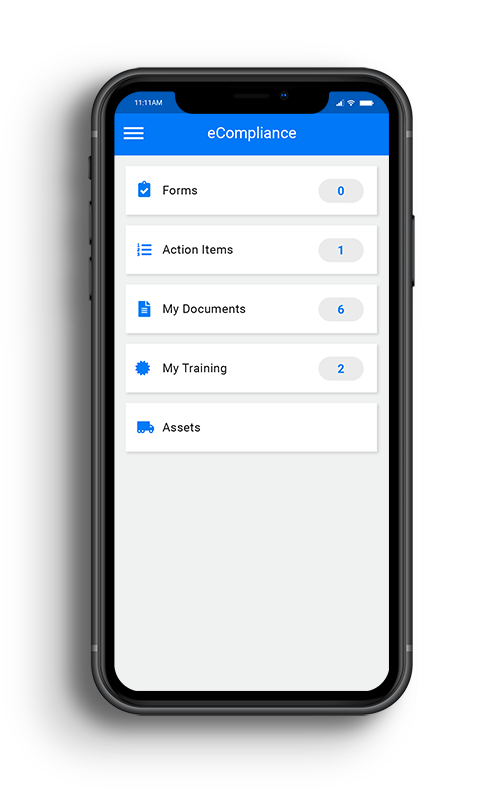
Share this Post
PUBLISHED
December 12, 2022
READ TIME
8 Minutes
WRITTEN BY
![]() Dina Adlouni
Dina Adlouni
Dina is the resident Content Writer at Alcumus North America. When she’s not writing about health and safety, you’ll find her enjoying a cup of tea while watching her favorite sitcom.
12 Tips to Prevent Workplace Injuries
Safety is a collective responsibility. From boardroom executives to front-line workers, everyone should be held accountable for each other’s well-being. One way to do this is by having a more proactive approach to safety with a strong safety culture and safety program in place. This can help you stay ahead of risks before they occur and mitigate hazards quickly when they arise.
We want to help you protect your people with the following tips on how to prevent workplace injuries. Read on to learn more about:
- What is accident prevention in the workplace?
- Why is accident prevention important?
- 12 tips to prevent workplace injuries
- Why work with Alcumus?
What is accident prevention in the workplace?
Accident prevention in the workplace entails elements put in place to help create a safe working environment. This includes policies, procedures, protocols, training, and much more. It is the employer’s responsibility to ensure all measures are taken by key stakeholders to prevent the risk of injuries, illnesses, or near-misses on site.
Why is accident prevention important?
Accident prevention is essential for several reasons, including:
- Keeping your teams and workforce safe from harm at all times
- Reducing the cost of fines to your organization in addition to insurance premiums
- Increasing employee engagement and retention rates, since they know the company values their safety
- Fewer damages to equipment and property loss
- Less downtime or shutdowns due to injuries or accidents on site
- Better credibility within the industry
- Greater chance of winning bids/tenders with a strong safety record
It’s critical to have a safety program in place which helps to prevent accidents, near-misses, injuries, and illnesses from occurring. This program should include information on leadership and worker participation, operations, improvement and much more.
To find out more about how to build a strong safety program check out Your Safety Program Starter Pack.
12 tips to prevent workplace injuries
Now that you know the benefits of accident prevention, let’s dive into what you can do to protect your team. There are many ways to prevent workplace injuries, but we narrowed it down to 12 tips to help employers keep their teams safe from harm.
Consider the following:
1. Ensure everyone is properly certified and regular training is completed
One of the first things an employer must do is ensure everyone is certified or has received the training necessary to conduct their job tasks safely. This includes all in-house employees as well as third-party contractors. Regular training sessions must also be completed, not only on new hires but seasoned professionals as well, to allow employees to refresh their skills and brush up on their knowledge of the topic. This will help to prevent workplace injuries as everyone has received the proper certification or training.
2. Conduct frequent hazard assessments and inspections
To effectively mitigate hazards on site, key stakeholders must conduct regular hazard inspections and assessments. This will help uncover any potential hazards on site, allowing teams to put the necessary corrective actions in place to help prevent possible workplace injuries. The findings must be communicated to all necessary parties so everyone is aware of the possible hazards that may be in the workplace and what to do to help mitigate them.
3. Extend safety culture to third-party contractors
Your organization’s safety culture does not stop at your in-house team but also extends to your third-party contractors. In the past, contractors were the cause of company accidents and delays, costing hundreds of thousands of dollars. It is vital that contractors are aware of all your procedures, policies, and communications just like a full-time employee, so they know how things are conducted at your organization.
4. Provide proper PPE
Employers must provide the right personal protective equipment to the workforce. Employees must be trained on how to use them properly and why it is necessary to help prevent workplace injuries. Employers must also regularly encourage the workforce to always wear their PPE, as some may find it is unnecessary. This can be done through toolbox talks or safety meetings to make sure everyone is held accountable.
5. Protect against asset and equipment failure or malfunction
Regularly check all tools and equipment used on site to protect against workplace injuries. This is critical as the tools being used could be defective, malfunction, or even fail to work when you need them. All assets must be inspected at a regular cadence to prevent any potential hazards which may arise. Make sure your teams are also well trained on how to use the equipment needed to complete their job tasks and how to spot deficiencies.
6. Use root-cause analysis and reporting to get to the source of injuries and hazards on site
It’s essential to conduct a root–cause analysis after an incident has occurred to help put the right actions in place. At times, employers skim over the surface and do not truly get to the source of the deficiency. This can be done through a variety of methods such as the 5 Why’s, Change Analysis, and much more. To learn more about this process, read our blog, Root Cause Analysis[Principles, Steps, & Tools].
7. Provide frequent breaks
Worker fatigue can lead to many accidents and injuries on site. That is why it is necessary to provide frequent breaks so employees are able to rest. The last thing you would want on site is someone who is unfocused and overworked, as this could lead to steps being skipped and certain elements going unchecked. This could not only put themselves in harm’s way but other team members as well. Make sure time is put into the schedule for your workforce to recharge to avoid any accidents.
8. Encourage two-way communication
Two-way communication between management and the front-line workforce is necessary for a safe work environment. Management must communicate all possible hazards which are present on site and how to mitigate them, and workers must also be given the opportunity to share their opinions. When employees feel a sense of psychological safety, they will openly give feedback on what is happening out on the field and report certain deficiencies which they may have been inclined to hide before.
9. Maintain compliance with legislation
It’s important to always be compliant with industry regulations and legislation within your region. Stay up to date with all new changes which may arise to avoid hefty fines and prevent workplace injuries. This can include ensuring all information is documented, stored, and communicated to employees so they are aware of the policies and procedures which must be conducted at your organization and the potential hazards they will encounter.
10. Be aware of any physical or medical restrictions
Members of the workforce may have medical restrictions or physical limitations which may make them prone to injuries. For example, you would not want to ask a person with a previous back injury to be lifting heavy equipment, as this could exacerbate their condition. For this reason, it’s important to ask employees if they have any medical conditions and collect the necessary documents to become more familiar with their capabilities. This will make it easier when hiring staff and assigning the right people to the tasks they can complete without issue.
11. Ensure you have the right number of staff to complete the job
Always ensure that you have the right number of people to complete the project your organization is working on. Oftentimes, certain organizations try to hire the minimum number of people needed to cut costs, but this is not conducive to completing the job. Workers can be overworked, which may cost the organization more in project delays or time off due to an injury or incident. Take this into account when hiring.
12. Always look to improve
Finally, always look to improve your processes and safety program. This is done through the continuous improvement process where all elements of your safety management system are evaluated through the Plan, Do, Check, Act Cycle. Regularly assess your safety management system to put the right elements in place to keep your workers safe. To learn more about this topic, check out our guide: EHS Management Continuous Improvement Guide.
Why Work with Alcumus?
We want to help you prevent workplace injuries with our digital EHS management solution, Alcumus eCompliance. Easily digitize and centralize all information, data, and documentation in one easily accessible platform. This will also help to reduce time-consuming manual processes and allow you to focus on more pressing issues. This will also streamline communication and make sharing documents with your teams easy, with the ability to check who has actually read what has been sent.
With everything in one solution, you also gain a greater sense of visibility into your safety program. This makes it easier to identify weaknesses or deficiencies. Once you spot the areas you need to work on, you can prioritize them and put the right corrective actions in place. Create scheduled or ad hoc inspections or audits, and assign corrective or preventive actions with automated notifications.
eCompliance also helps to empower your employees with our mobile application. Place safety in the palm of their hands with the ability to instantly report on hazards, upload pictures, and alert key stakeholders of the risks no matter where they may be.
And that’s just the beginning. Want to learn more about how eCompliance can help you create a safer workplace? Fill out the form below or speak to an Alcumus representative today.
Learn How You Can Get Alcumus
Complete this form and one of our safety experts will be in touch.


